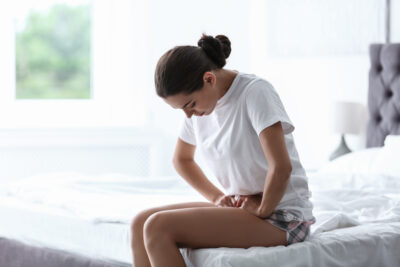Losing hair can be distressing for anyone, and women are no exception. Whether it’s due to hormonal changes, genetics, or other factors, hair loss can affect a woman’s self-esteem and confidence. However, the good news is that there are various effective treatment options available specifically designed to address female hair loss concerns. Fortunately, you can learn everything you need to know about hair loss treatments for women with a search online right now.
Understanding the Causes of Hair Loss in Women
It’s a common misconception that hair loss only affects men. But the reality is more than 50 percent of women will experience noticeable hair loss in their lifetime. Before you jump to treatment, it’s important to understand the various causes as the underlying cause can influence the choice of treatment.
The most common causes of hair loss in women are hormonal changes, vitamin deficiencies, restrictive diets, extreme emotional or physical stress, and genetic factors. Even certain hairstyles, such as tight ponytails or braids can also cause hair loss. But that’s not all. There are other causes to discover. Researching this information online and consulting a healthcare professional for a proper diagnosis can help determine the best course of treatment for you.
Non-Surgical Treatments for Female Hair Loss
Women looking for non-invasive treatment options should consider topical solutions, such as Minoxidil. This product stimulates hair growth and prolongs the hair growth cycle. It’s also available over-the-counter and can be applied directly to the scalp.
There are other non-surgical options too like low-level laser therapy (LLLT), which uses red light to stimulate hair follicles and promote hair growth, and PRP therapy, which involves injecting your own platelet-rich plasma into your scalp to stimulate hair growth. Vitamin injections are also an option. Researching all your options and consulting a professional can help determine which one is right for you!
Surgical Solutions for Female Hair Loss
In certain cases of advanced or persistent hair loss, surgical interventions may be necessary. One common surgical procedure is hair transplantation. During this procedure, hair follicles from areas of the scalp with healthy hair growth, known as the donor area, are harvested and transplanted to the areas experiencing hair loss. Advanced techniques, such as follicular unit extraction (FUE) or follicular unit transplantation (FUT), ensure natural-looking results with minimal scarring.
There are other surgical options as well, such as scalp micro pigmentation, which can create the illusion of thicker, fuller hair. While surgical options are more invasive, they can often provide women with permanent and transformative results. Remember to do your research, compare your options, and consult a professional to determine if surgical solutions are right for you.
Lifestyle Changes and Home Remedies
In addition to medical treatments and surgical options, certain lifestyle changes and home remedies may support hair growth and overall hair health for women. For starters, maintaining a nutritious diet can provide essential nutrients for hair growth. Staying hydrated and ensuring adequate intake of omega-3 fatty acids can also contribute to healthy hair.
Other natural remedies include scalp massages. Avoiding excessive heat styling, tight hairstyles, and harsh chemical treatments can also minimize hair damage and breakage. These are just a few things to consider and there are more to discover. Keep searching online to learn more about natural remedies for hair loss.
Seeking Professional Advice: Choosing the Right Treatment
When it comes to addressing hair loss, seeking professional advice is crucial in determining the right treatment approach. Consulting with a healthcare professional or a dermatologist who specializes in hair disorders can provide valuable insights and guidance. They can evaluate the specific cause of hair loss, assess the extent of the condition, and recommend suitable treatment options based on individual needs.
During a consultation, the healthcare professional may suggest a combination of treatments tailored to your unique circumstances. This could involve a blend of non-surgical treatments, lifestyle modifications, and even surgical interventions if necessary. Additionally, they can provide ongoing monitoring and adjustments to the treatment plan as needed. Overall, by seeking professional advice, women can have confidence in the treatment they choose, ensuring that they are on the right path to effectively address their hair loss concerns.
Start Searching Today
When it comes to finding the right hair loss treatment for women, knowledge is power. By exploring a range of options, from gentle home remedies to advanced surgical procedures, you can take control of your hair’s future. Remember, each person is unique, and what works for one may not work for another.
So, don’t wait any longer! Start your search today to learn about the effective treatments available. Take the first step toward regaining your confidence and finding a solution that suits your needs. With a wealth of information at your fingertips, you can make informed decisions and embark on a journey to beautiful, healthy hair.



